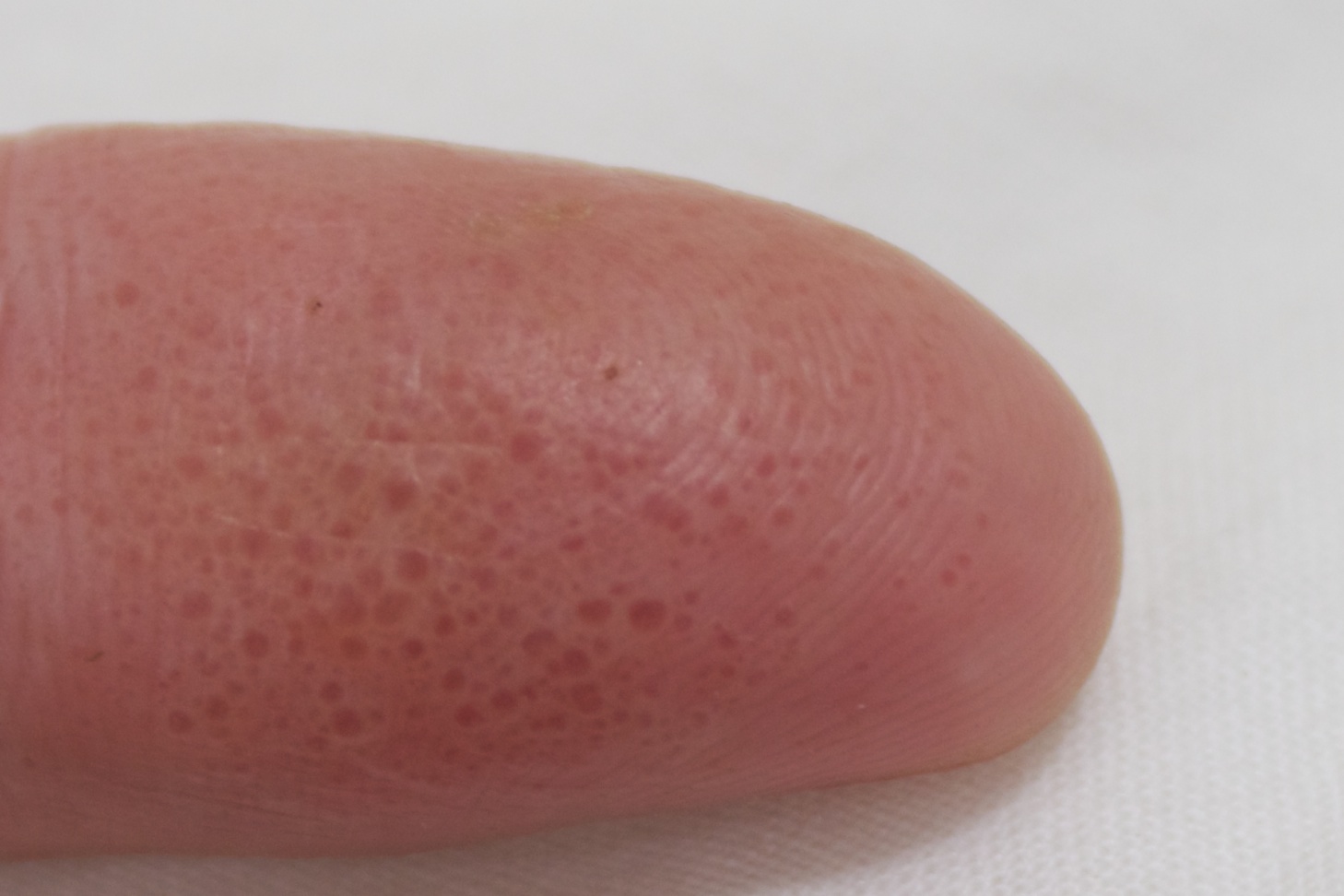Red and itchy rash with tiny blisters, appearing on the hands and feet. What could it be? From the title you can see the range of responses different health professionals will have for the same problem. Some of these conditions are easy to tell apart, while others are not. Below I would like to share a bit of information that will hopefully shed light on this often complicated issue.
I recently saw a patient with the same symptoms I mentioned above. Over the summer she developed a rash on both her feet and hands that was red, itchy and full of tiny blisters. Upon seeing two different general physicians, she still didn’t have a proper diagnosis. One told her it may be fungal, while the other said it is probably eczema. One recommended a steroid cream, the other said that she had better not use a steroid for risk of worsening a fungal problem. To make matters even more complicated, a local natural health practitioner told her that it is probably shingles!
So what did this woman really have? How could we figure it out?
Well let’s chat about the history a bit here. In her youth she had suffered with atopic eczema, hay fever and hives when touching horses. So right off the bat we know we are dealing with someone with an allergic constitution, who has a predisposition to eczema. When she described her current outbreak on her hands and feet, it was actually quite similar to what she had as a child – red and itchy rash with tiny blisters, particularly between her fingers and on the palms and souls of her hands and feet. This to me sounded a lot like eczema, particularly pompholox eczema.
Pompholox eczema is usually on both hands, or feet, not just one side.
Chinese medicine has identified this type of eczema for a long time, with one of the names for it being “Ant nest”. An old text book called the Collection of Treatments for Sores states that this disorder,
“Mostly erupts on the hands and feet, its appearance is like the nest of an ant, just like the pricks of a needle, the itching is extreme and upon rupturing there is watery exudation.”
Below is an image clearly depicting “Ant nest”, or pompholox eczema.
Now this type of eczema can certainly look fungal as well, being similar to athletes foot or Tinea pedis in appearance. The difference though would be that the fungal problem is usually only one sided, or at least initially, and would not usually involve both hands and feet at the same time. It is possible to have both a fungal infection and a pompholox eczema at the same time, and in this situation the two of them can be hard to tell apart. A skin scraping can then be taken and analyzed under a microscope so as to look for actual fungal spores, which will then clarify the issue for sure.
Below is a type a fungal rash with small blisters, but is only on one foot, not the other. And not on the hands.
As for the recommendation of shingles, I thought this to be pretty far fetched, as this relative of the herpes virus usually only manifests on one side of the body along a particular nerve root. It usually only affects one part of the body as well, like the trunk, head, or wrist, again following a particular nerve root. So for the wrist, the virus may go up the radial nerve, thus appearing on the same side as the thumb, index and middle finger and be absent on the other side.
Shingles usually only comes about once in life and then never returns. So besides the fact that this woman’s rash was totally non-specific to one particular nerve root, being on both her hands and feet, it had been coming and going for months already. It was very clear that her condition could not be shingles, a fact that made her very happy.
Now because this woman had a long history of eczema and allergies, I assumed that her problem was actually due to eczema. She was just having a re-flare up of an old problem and everyone was acting stumped. A little investigation combined with some understanding of the way that different disorders manifest went a long way in deciphering a not so complicated issue.
Wishing you health,
Dr. Trevor Erikson
Reference – The Chinese quote for ant nest was translated By Mazin Al Khafaji and appears in his course notes on the Chinese medicine treatment of pompholox eczema.



